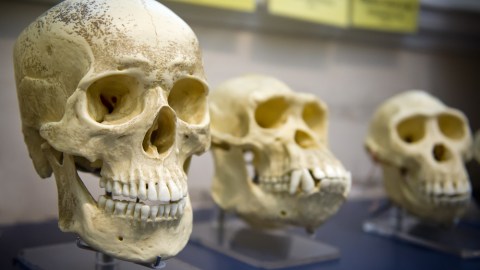Report: Unique Human Faces Evolved To Signal Individual Identity

The reason you’ve got a different nose than the person who lives next door isn’t just because you have different parents. A new report in Nature Communications suggests that our diverse facial features can be linked to an evolutionary development from eons ago that corresponded with the increased importance of interpersonal interaction.
Basically, when our early ancestors began to prioritize social relationships for the purposes of assistance and fellowship, it became more useful to be able to tell individuals apart from others. This is why, of all the parts of a human body, facial features are the most diverse. Michael Sheehan, one of the UC Berkeley researchers behind the study, told National Geographic that a unique human face is like an evolutionary nametag.
Sheehan and his team stress that while identifiability may be a primary reason why we all developed different features, other factors could definitely have been at play. Specific features were probably favored in sexual selection, others by environmental factors.
Keep reading at Smithsonian Mag & National Geographic
Photo credit: JuliusKielaitis / Shutterstock
For a broader discussion on evolution as a whole, check out this clip from Big Think expert Kirk Johnson, Director of the Smithsonian National Museum of Natural History:
brightcove.createExperiences();
// ]]>


